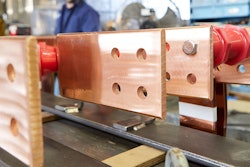According to a study by United Airlines, the cause of failure for 89 percent of complex mechanical equipment is completely random, without any relation to its lifecycle.
It's long been agreed that reactive maintenance isn't effective. Instead of allowing equipment to reach the point of failure, issues can be spotted much earlier by detecting subtle changes in the machinery over time. With this insight, predictive maintenance is enabled and parts can be replaced before a total breakdown occurs.
A predictive maintenance program is effective if the alert gives enough warning to determine what the problem is, and sufficient notice to order a part if needed. This is particularly important when replacing obsolete legacy equipment, as there may be some lead time before a particular part can be delivered to site.
The point of failure for a piece of machinery occurs much later than the fault can be detected, therefore there is a window of opportunity that predictive maintenance leverages. Using a range of data-rich condition monitoring streams, and the right software, the right information can be provided with time to spare before a breakdown.
The challenge for plant engineers is to determine what data acquisition architecture is best suited to successfully monitor the health of their industrial equipment.
Vibration Monitoring
Rotating equipment is an umbrella term that includes gearboxes, reciprocating equipment and centrifugal machinery. The most commonly used condition monitoring method for these machines and the cornerstone of condition monitoring in general, is vibration analysis. Vibration measurements can be taken on the machine bearing casings, using a type of sensor called an accelerometer.
It can be tricky to decipher exactly what is taking place inside a machine, with so many rotating elements contained in one unit. To differentiate between the different vibrations, a commonly employed technique is to examine the individual frequencies present in the signal and match these to individual parts, or certain malfunctions.
For example, if used to track vibration frequencies on an induction motor, most applications require vibration measurements in the horizontal, vertical and axial direction, on both the inboard and outboard motor bearing. This provides insight into typical mechanical issues such as misaligned coupling and unbalance. The level of vibration can also be compared with historical baseline values, such as former start ups and shutdowns.
Vibration monitoring systems can also help maintenance engineers to diagnose tricky issues with pump application, used for protection against pump resonance, recirculation and cavitation.
Cavitation is the formation of bubbles around a pump impeller. This tends to form in liquids as they are being transported through and around a pump system. When each of these tiny bubbles collapses or bursts, it creates a high energy shock wave inside the liquid, which can be very destructive to the pump and impeller.
Most people who work with pumps are familiar with the term cavitation. It describes any flow-related vibration on pumps, and is often detected through vibration analysis when pump noise level is high, or pump vibration is erratic with lots of noise in the spectrum.
Similarly, the vibrations can provide useful insight in relation to gears. All gear sets create a frequency component referred to as a gear mesh. The fundamental gear mesh frequency is equal to the number of gear teeth, multiplied by the running speed of the shaft. Identifying changes to the gear-mesh frequency can be indicative of problems in the gearbox, such as pitting and spalling on the gear teeth.
This damage to gear teeth is often caused by contamination in the oil inside the unit. Indentations occur in the teeth over time, because sand and dirt sometimes finds its way into the surrounding oil, causing damage. If not detected early enough, this problem could progress to the point of catastrophic failure.
Whichever part you use this technology on, there is a wide range of vibration monitoring systems out there. Some are simple handheld models that engineers can use as part of scheduled inspections. Others are more advanced, continuous monitoring systems that are working constantly to check the health of equipment.
Remember, there are countless opportunities to measure changes in a factory to indicate upcoming problems, but not all opportunities to gather data will be useful. Be selective as you develop your data acquisition architecture and start reaping the benefits of maintenance taking place at just the right time.























